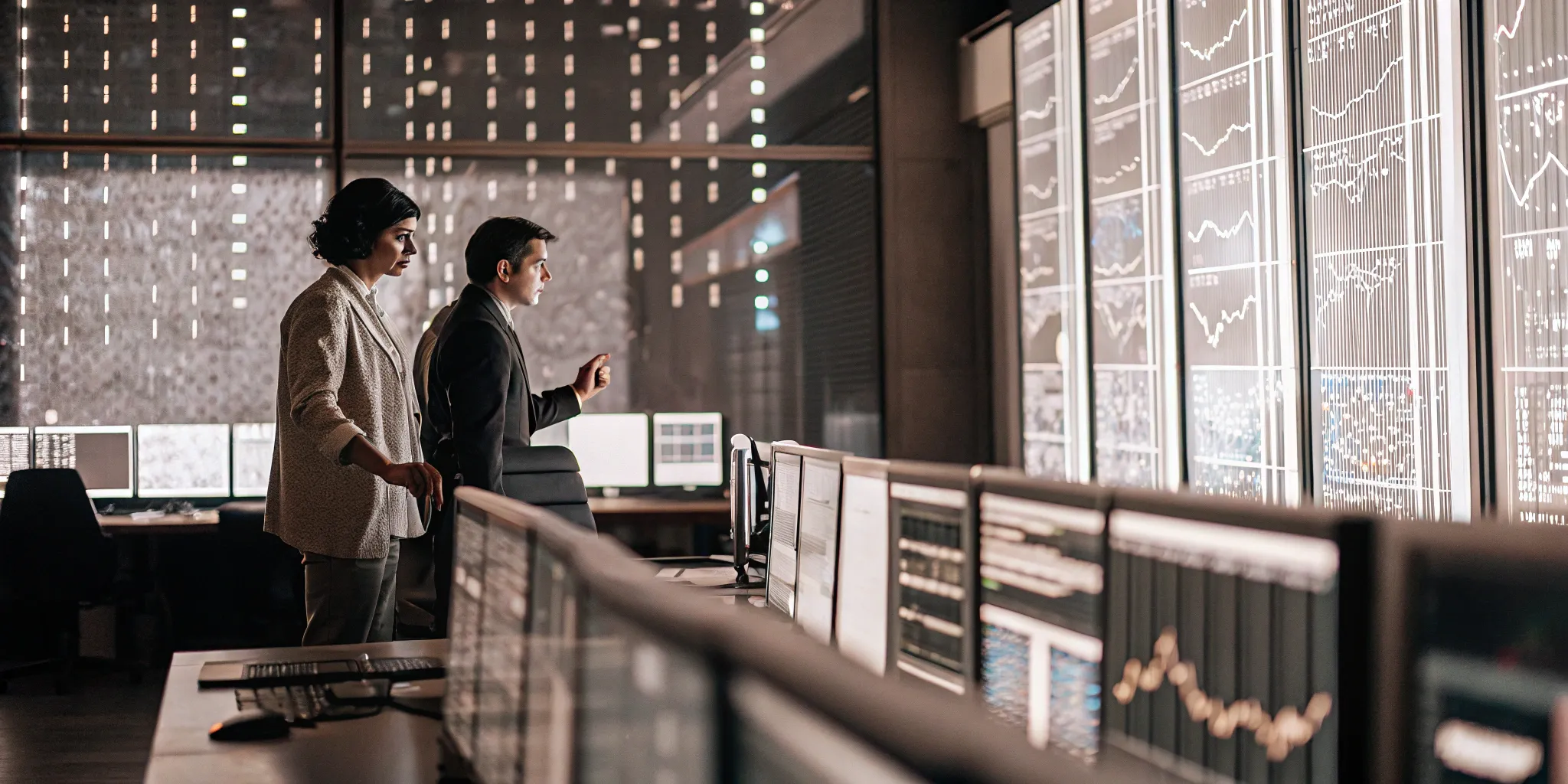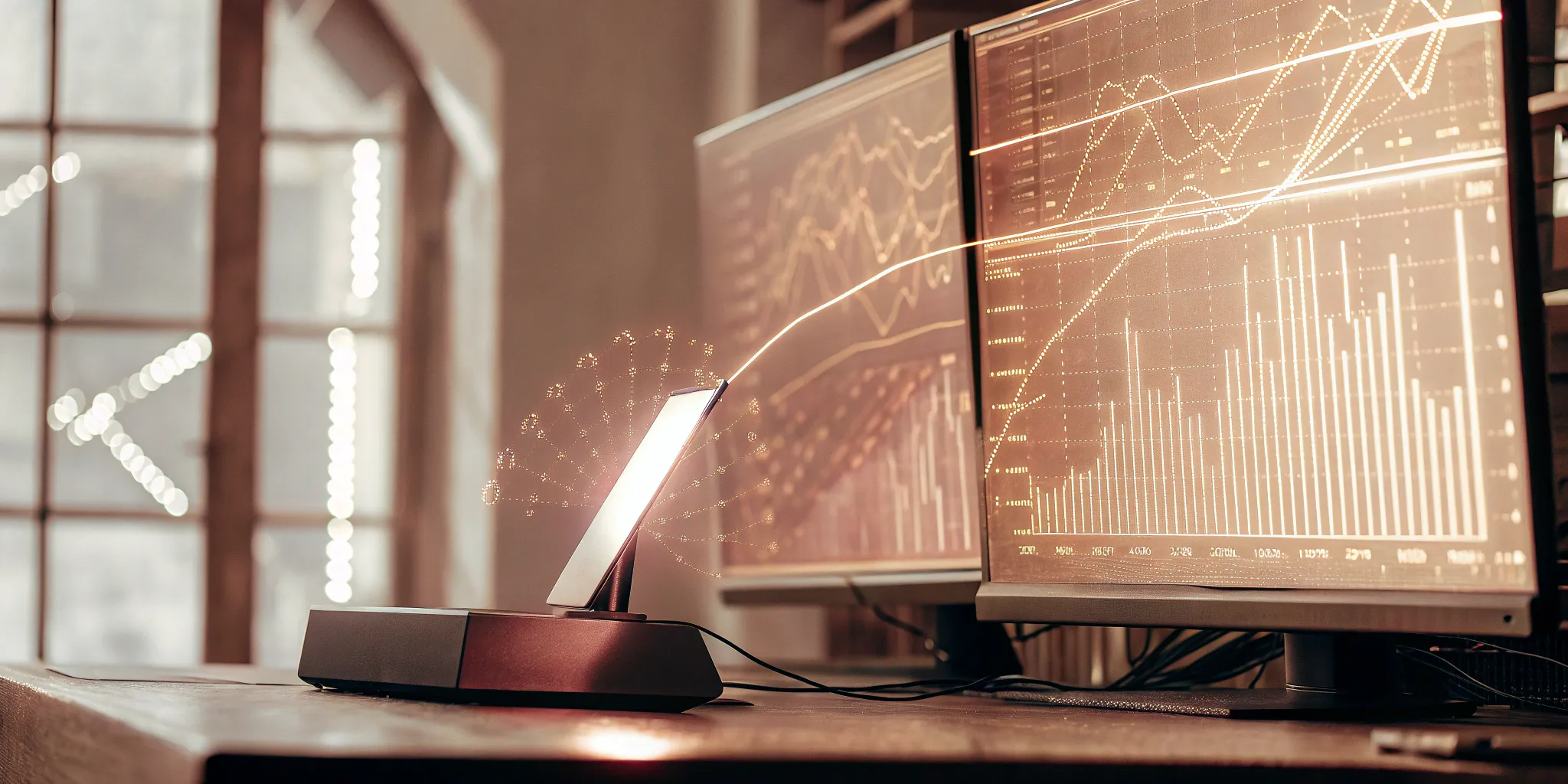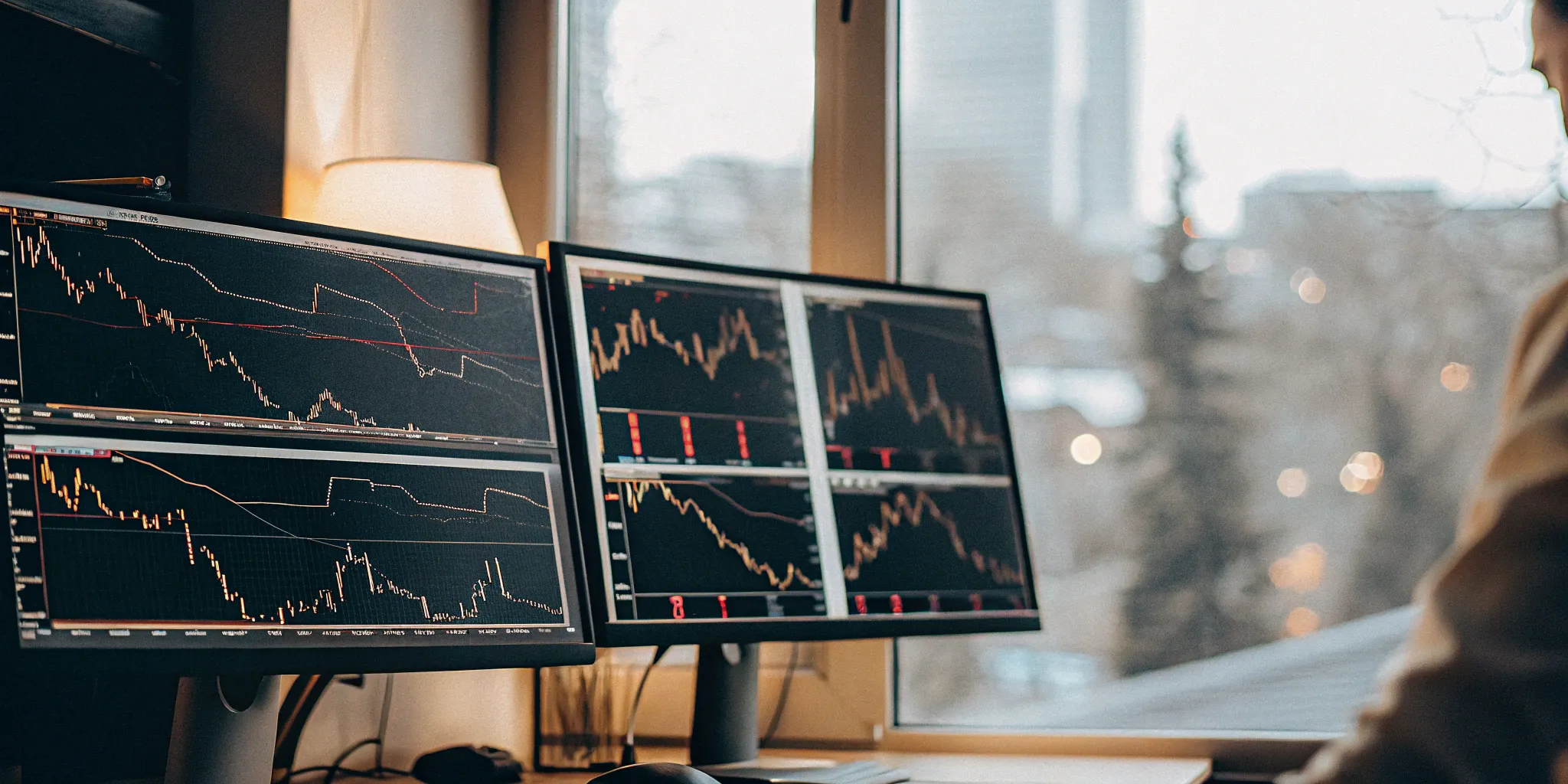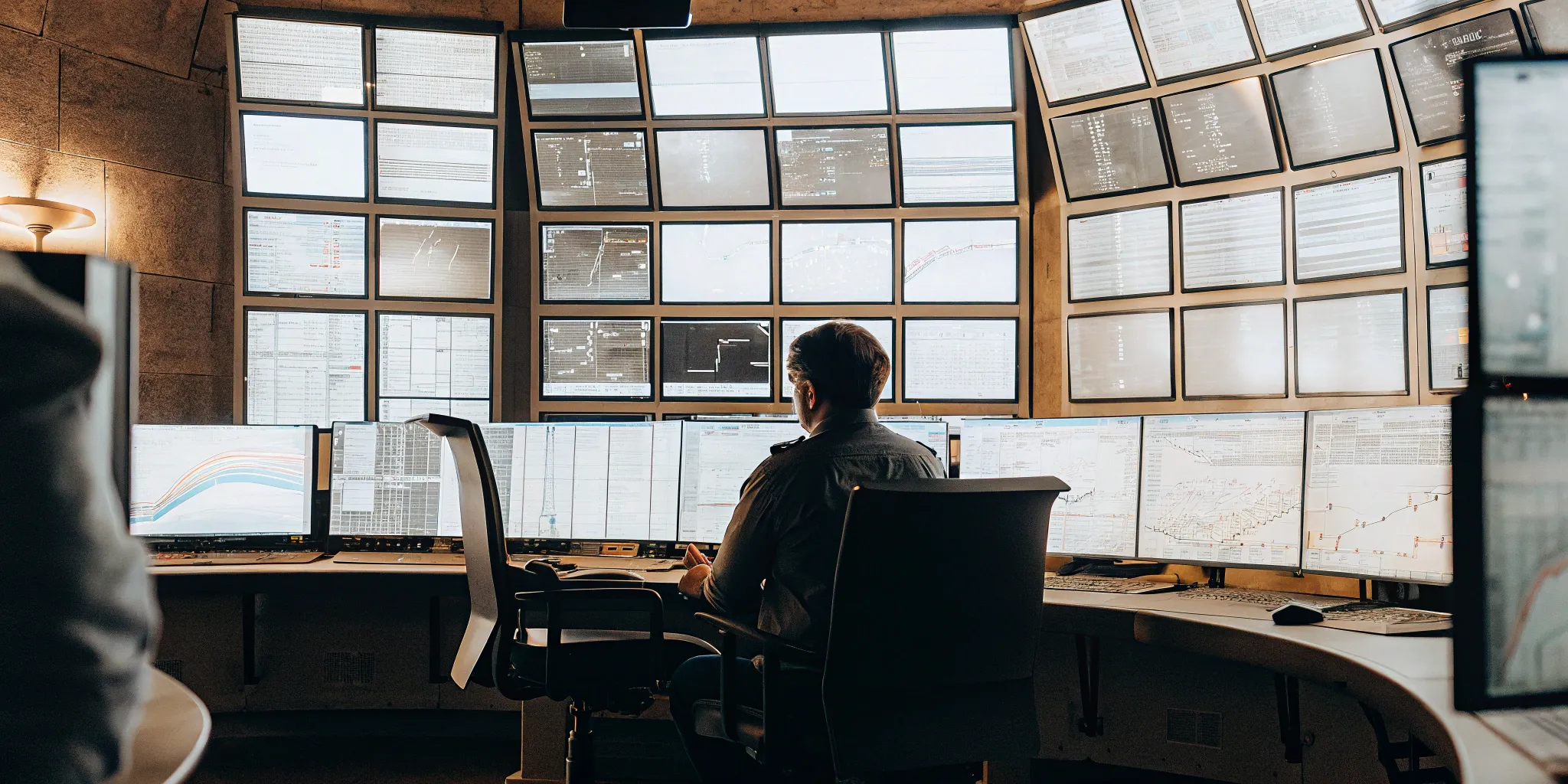The world of finance is changing at warp speed, and if you’re not keeping up, you’re falling behind. Algorithmic trading, once the domain of Wall Street giants, is becoming increasingly accessible to everyday investors. But what does the future of algo trading 2025 hold? This article explores the key trends shaping the future of algorithmic trading, from self-learning algorithms and AI integration to the democratization of advanced trading tools. We’ll also examine the potential risks and the evolving regulatory landscape, offering insights to help you prepare your trading strategy for the years ahead. Whether you’re a seasoned trader or just starting, understanding these trends is crucial for success in the rapidly changing world of finance.
Key Takeaways
- AI-driven algorithms are reshaping markets: Forget static systems. Self-learning algorithms powered by AI and alternative data offer more accurate predictions and real-time decision-making, giving traders a significant edge.
- Accessibility is increasing: Sophisticated trading tools and educational resources are becoming more widely available, empowering individual investors to participate in algorithmic trading. Continuous learning is key to staying ahead.
- Responsible use is essential: Balancing the power of AI with robust risk management, human oversight, and ethical considerations is crucial for navigating the evolving trading landscape.
What is the Future of Algorithmic Trading?
Algorithmic trading—using computer programs to execute trades based on pre-defined rules—is rapidly becoming the dominant force in financial markets. Looking ahead, the future of algo trading is brimming with potential, driven by advancements in artificial intelligence (AI) and machine learning. These technologies are poised to reshape how we analyze markets, manage risk, and execute trades. Experts predict a surge in market growth, with the algorithmic trading market expected to reach $4.06 billion by 2032. This expansion reflects the increasing recognition of algorithmic trading’s power to enhance efficiency, minimize emotional biases, and unlock new opportunities.
Beyond simply automating existing strategies, AI is enabling entirely new approaches. Self-learning algorithms can adapt to changing market conditions, refine their strategies, and even predict investor behavior by analyzing news sentiment and social media. This shift towards autonomous trading systems marks a significant evolution in how we interact with financial markets. The integration of AI and new technologies is changing not just how trades are executed but also who is trading. Advanced platforms are making sophisticated tools more accessible, potentially democratizing algorithmic trading and opening doors for a wider range of investors. This rapid evolution also brings new challenges, including the need for robust risk management and updated regulations to ensure market integrity and investor protection. The future of algorithmic trading is dynamic and complex, promising both exciting opportunities and critical considerations for all market participants.
What’s Shaping the Future of Algo Trading?
Algorithmic trading is constantly evolving. Let’s explore the key trends poised to reshape the landscape by 2025 and beyond.
Self-Learning Algorithms and AI Integration
What’s Shaping the Future of Algo Trading?
Algorithmic trading is constantly evolving. Let’s explore the key trends poised to reshape the landscape by 2025 and beyond.
Self-Learning Algorithms and AI Integration
Forget static algorithms. The future is self-learning. AI-powered systems will analyze market data, identify patterns, and adjust their strategies without constant human intervention. Imagine algorithms that not only predict price movements but also anticipate investor behavior and broader market trends by processing news sentiment and social media chatter. This level of sophistication will unlock new opportunities for traders seeking an edge. At FN Capital, our FAST AI algorithm already leverages these principles, constantly refining its approach based on real-time market dynamics.
Advanced Data Analytics and Alternative Data
Traditional market data isn’t enough anymore. Tomorrow’s algorithms will tap into a wider range of data sources—everything from satellite imagery and social media trends to consumer behavior and weather patterns. This “alternative data” provides a deeper understanding of market forces, enabling more accurate predictions and the identification of hidden opportunities. By incorporating diverse data streams, algorithms can paint a more comprehensive picture of the market, leading to more informed trading decisions.
High-Frequency Trading Innovations
Speed is paramount in high-frequency trading (HFT). HFT algorithms execute thousands of trades per second, capitalizing on minute price fluctuations. Co-location, placing servers near exchanges, becomes crucial to minimize latency and gain a speed advantage. As HFT technology advances, we can expect even faster execution speeds and more sophisticated strategies, pushing the boundaries of what’s possible in automated trading. At FN Capital, our focus on the highly liquid EUR/USD pair ensures we can execute trades with minimal slippage, a key advantage in the fast-paced world of HFT.
How AI and Machine Learning Transform Trading Strategies
AI and machine learning are no longer futuristic concepts in finance—they’re actively reshaping how trading strategies are built and executed. These technologies offer the potential for more accurate predictions, real-time decision-making, and sophisticated risk management, giving traders a significant edge in today’s markets.
Predictive Capabilities and Market Insights
Imagine algorithms that not only predict price movements but also anticipate investor behavior and broader market trends. That’s the power of AI. By analyzing massive datasets, including news sentiment and social media activity, AI can identify subtle patterns and correlations that humans might miss. These insights can inform more accurate predictions, potentially leading to lower risk for investors. As these algorithms become self-learning, they’ll continuously refine their predictive capabilities without constant human intervention, adapting to evolving market dynamics.
Sentiment Analysis and Real-Time Decisions
One of the most impactful applications of AI in trading is sentiment analysis. Natural Language Processing (NLP) allows algorithms to sift through news articles, social media posts, and other textual data to gauge market sentiment toward specific assets or broader economic trends. This real-time understanding of collective market psychology can inform immediate trading decisions, allowing traders to capitalize on emerging opportunities or mitigate potential risks more effectively. AI empowers trading systems to become smarter and more adaptable, reacting to news and events as they unfold.
Risk Assessment and Portfolio Optimization
AI isn’t just about maximizing returns—it’s also about minimizing losses. AI-powered tools can analyze historical data, market volatility, and other factors to provide more robust risk assessments. This allows traders to fine-tune their strategies and optimize their portfolios for better risk-adjusted returns. By automating many aspects of risk management, AI frees up traders to focus on higher-level strategic decisions. The success of AI in trading hinges on both sophisticated algorithms and access to high-quality data, encompassing both traditional market data and unstructured data like news and social media sentiment. This combination of data and intelligent processing is what fuels the transformative power of AI in the trading landscape.
Emerging Markets and Global Adoption
The growth of algo trading isn’t confined to a single region; it’s a global phenomenon. The Americas currently lead, fueled by robust financial infrastructures and a thriving fintech sector. Meanwhile, the Europe, Middle East, and Africa region shows steady progress, focusing on regulatory frameworks and market integrity. The Asia-Pacific region also experiences rapid growth, driven by dynamic economic expansion and increasing technological adoption. This worldwide adoption underscores its growing importance in finance. Varying regional approaches to regulation and adoption create a diverse and evolving market landscape.
What are the Risks of Algo Trading in 2025?
Even with its potential, algorithmic trading comes with inherent risks that traders need to understand and mitigate. Let’s break down some key challenges you might face in 2025 and beyond.
Managing Market Volatility and System Errors
Market volatility is a constant companion for traders. Sudden price swings can trigger unexpected losses, even with risk management tools in place. Your algorithms need to be robust enough to adapt to these unpredictable shifts. A solid algorithmic trading strategy accounts for these fluctuations and includes mechanisms to adjust to rapidly changing market conditions. System errors are another potential risk. Think of things like computer malfunctions or glitches in your trading platform. These can disrupt your trading activity and lead to losses if not addressed quickly. Having robust backup systems and fail-safes is crucial for minimizing disruptions.
Over-Optimization and Strategy Pitfalls
Over-optimization is a sneaky risk in algo trading. It’s tempting to tweak your algorithms to perform perfectly on historical data. However, this can create a system that’s too closely fitted to the past. When faced with live market conditions, an over-optimized algorithm may falter. It’s like training a racehorse to run only on a specific track—it won’t perform well on unfamiliar terrain. Finding the right balance between historical accuracy and adaptability is key to long-term success. Avoid the trap of chasing past performance at the expense of future resilience.
Algo Trading Market Growth: 2025-2030
Revenue Forecasts and Market Size
The algorithmic trading market is poised for significant expansion. Current projections indicate a near doubling of market size, from $13.72 billion in 2024 to an estimated $26.14 billion by 2030. This represents a substantial compound annual growth rate of approximately 11.2%, highlighting the increasing integration of automated trading strategies across the financial landscape. A recent report offers a detailed analysis of these growth trends. This expansion creates opportunities for both established players and new entrants, driving innovation and competition within the industry.
Emerging Markets and Global Adoption
The growth of algo trading isn’t confined to a single region; it’s a global phenomenon. The Americas currently lead, fueled by robust financial infrastructures and a thriving fintech sector. Meanwhile, the Europe, Middle East, and Africa region shows steady progress, focusing on regulatory frameworks and market integrity. The Asia-Pacific region also experiences rapid growth, driven by dynamic economic expansion and increasing technological adoption. This worldwide adoption underscores its growing importance in finance. Varying regional approaches to regulation and adoption create a diverse and evolving market landscape.
One key area of focus is increased transparency. Regulators are looking closely at the “black box” nature of some algorithms, where the logic behind trading decisions isn’t revealed. Future regulations may require more “white box” algorithms, meaning their inner workings must be disclosed. This shift toward transparency aims to hold providers accountable and build trust in the trading process. Some proposals even suggest that providers of black box algorithms register as research analysts and maintain detailed records of their activities.
Retail Investor Protection and Fair Access
What are the Risks of Algo Trading in 2025?
Even with its potential, algorithmic trading comes with inherent risks that traders need to understand and mitigate. Let’s break down some key challenges you might face in 2025 and beyond.
Managing Market Volatility and System Errors
Market volatility is a constant companion for traders. Sudden price swings can trigger unexpected losses, even with risk management tools in place. Your algorithms need to be robust enough to adapt to these unpredictable shifts. A solid algorithmic trading strategy accounts for these fluctuations and includes mechanisms to adjust to rapidly changing market conditions. System errors are another potential risk. Think of things like computer malfunctions or glitches in your trading platform. These can disrupt your trading activity and lead to losses if not addressed quickly. Having robust backup systems and fail-safes is crucial for minimizing disruptions.
Over-Optimization and Strategy Pitfalls
Over-optimization is a sneaky risk in algo trading. It’s tempting to tweak your algorithms to perform perfectly on historical data. However, this can create a system that’s too closely fitted to the past. When faced with live market conditions, an over-optimized algorithm may falter. It’s like training a racehorse to run only on a specific track—it won’t perform well on unfamiliar terrain. Finding the right balance between historical accuracy and adaptability is key to long-term success. Avoid the trap of chasing past performance at the expense of future resilience.
Network Latency and Technical Vulnerabilities
In the fast-paced world of algo trading, milliseconds matter. Network latency, even brief delays in data feeds, can result in missed opportunities or worse. Imagine your algorithm trying to execute a trade based on slightly outdated information—the market may have already moved, leading to an unfavorable outcome. Technical vulnerabilities also pose a threat. This includes everything from computer malfunctions to security breaches. Protecting your systems with robust security measures and having backup plans in place is essential. Minimizing latency and ensuring the stability of your trading infrastructure are non-negotiable for success in algo trading.
While regulations often target institutional players, upcoming changes aim to protect retail investors and ensure fair access to algo trading technology. Historically, sophisticated tools were primarily available to large firms. New rules could democratize access, giving everyday investors the chance to use faster, more precise trading methods. This levels the playing field and empowers individuals in the market.
Compliance and Reporting Standards
Expect more stringent compliance and reporting standards across the board. Brokers may need prior exchange approval for each algorithm they deploy and use unique identifiers for all algorithmic orders. Detecting and categorizing high-speed orders will become crucial, along with implementing secure API access using methods like OAuth and two-factor authentication. Working only with approved algo providers and seeking approval for any system changes will likely become standard practice. These measures aim to enhance the overall integrity and security of the trading ecosystem.
Automated safeguards are essential for managing risk in the fast-paced world of algorithmic trading. Think of these safeguards as your algorithmic trading co-pilot, constantly monitoring and adjusting to keep your strategies on track. Tools like stop-loss orders, which automatically exit trades when prices hit a predetermined level, act like a safety net, limiting potential losses. Position sizing, another key safeguard, helps control risk by setting limits on the amount invested in any single trade. Finally, portfolio rebalancing ensures diversification by adjusting asset allocations according to your overall investment strategy. These automated tools work in concert to create a dynamic risk assessment framework, adapting to market fluctuations and protecting your capital. For a deeper dive into these concepts, check out this guide to futures trading algorithms.
Balancing AI Systems with Human Expertise
While algorithms excel at processing vast amounts of data and executing trades with precision, human expertise remains invaluable. The ideal scenario isn’t about replacing humans with machines, but rather forging a powerful partnership. Imagine a trading strategy where AI identifies potential opportunities and executes trades, while human traders monitor the overall market landscape, adjust the algorithm’s parameters as needed, and step in during unexpected events. This collaborative approach combines the strengths of both, allowing for more informed decisions and better risk mitigation. It’s about leveraging AI’s speed and efficiency while retaining the crucial element of human judgment. To learn more about the evolving role of algorithms in trading, see these game-changing upgrades.
Essential Trader Skills for 2025
The trading landscape is constantly evolving, and traders need to adapt to stay ahead of the curve. Moving forward, understanding the implications of new technologies and regulations will be paramount. Traders will need to develop a deep understanding of how AI and machine learning impact trading strategies. This includes interpreting data analysis, understanding the limitations of algorithms, and recognizing potential biases. Furthermore, staying informed about evolving regulations and compliance standards will be crucial for adapting to the changing landscape. The ability to adapt, learn, and refine strategies will be the defining characteristic of successful traders in the years to come. For more insights into the future of automated trading systems, explore how AI is transforming the field. This article on algorithm upgrades also offers valuable perspectives on the skills traders will need.
Prepare Your Trading Strategy for the Future
Adapt to Technological and Regulatory Shifts
The trading landscape is constantly evolving. Keeping up with the latest advancements and regulatory changes is no longer a luxury, but a necessity. As AI and machine learning become more prevalent in futures trading, algorithms will become increasingly sophisticated and autonomous. This shift demands traders adapt and refine their strategies to remain competitive. Algorithmic trading is transforming how trades are executed, with AI, high-speed technology, and new recording methods like blockchain playing key roles. Understanding these technological advancements and their implications is crucial for success. Furthermore, upcoming regulatory changes designed to address the evolving market will require traders to stay informed and compliant.

Risk Management and Human Oversight in Future Trading
As algorithmic trading becomes more sophisticated, so too must its risk management strategies. The future of trading hinges on a balanced approach, blending the speed and efficiency of AI with the nuanced judgment of human oversight.
Dynamic Risk Assessment and Automated Safeguards
Automated safeguards are essential for managing risk in the fast-paced world of algorithmic trading. Think of these safeguards as your algorithmic trading co-pilot, constantly monitoring and adjusting to keep your strategies on track. Tools like stop-loss orders, which automatically exit trades when prices hit a predetermined level, act like a safety net, limiting potential losses. Position sizing, another key safeguard, helps control risk by setting limits on the amount invested in any single trade. Finally, portfolio rebalancing ensures diversification by adjusting asset allocations according to your overall investment strategy. These automated tools work in concert to create a dynamic risk assessment framework, adapting to market fluctuations and protecting your capital. For a deeper dive into these concepts, check out this guide to futures trading algorithms.
Balancing AI Systems with Human Expertise
Gain a Competitive Edge with Emerging Tech
The future of algo trading is intertwined with emerging technologies. Staying ahead means understanding how these advancements can refine your strategies and give you an edge.
Quantum Computing and Enhanced Computational Power
Quantum computing is poised to revolutionize finance by accelerating complex calculations. Imagine creating highly accurate pricing models for intricate financial instruments, optimizing portfolios with unprecedented precision, and performing lightning-fast risk assessments—all in milliseconds. This leap in computational power will give a significant advantage to firms that adopt quantum computing early. While still in its early stages, the potential of quantum computing to reshape algorithmic trading is undeniable.
Blockchain for Security and Transparency
Blockchain technology offers increased transparency and efficiency in trading. Algorithms will be able to execute trades across decentralized exchanges, leveraging smart contracts to automate transactions and mitigate risks. This translates to faster execution speeds, lower fees, and a boost in trust within the financial ecosystem. Imagine a future where every transaction is recorded on a secure, immutable ledger, accessible to all parties involved. This level of transparency could significantly reduce fraud and increase accountability in the trading process.
Cloud Computing for Scalability and Performance
Cloud computing provides the flexibility and scalability crucial for modern algo trading. With cloud-based platforms, you gain access to real-time data and advanced analytical tools, enabling you to adapt to market changes and scale your operations efficiently. This infrastructure empowers traders to develop and deploy sophisticated algorithms without the constraints of traditional hardware limitations. As your trading volume grows, cloud resources can scale seamlessly to meet your needs, ensuring consistent performance and minimizing downtime.
How can I prepare for the future of algo trading?
Frequently Asked Questions
Is algorithmic trading only for professional traders?
Not anymore. While it was once the domain of large institutions, advancements in technology and the rise of user-friendly platforms are making algo trading accessible to a wider range of investors. Look for platforms that offer pre-built strategies, educational resources, and affordable pricing. At FN Capital, we welcome everyone from beginners to experienced professionals.
What are the biggest risks of using algorithms to trade?
Like any trading strategy, algo trading has inherent risks. Market volatility can impact even the most sophisticated algorithms, so robust risk management is crucial. System errors, technical glitches, and network latency can also disrupt trading activity. Over-optimization, where an algorithm performs well on historical data but poorly in live markets, is another common pitfall.
How can I prepare for the future of algo trading?
Stay informed about emerging technologies like AI, machine learning, and blockchain. Understand how these advancements are shaping trading strategies and creating new opportunities. Continuous learning is key – seek out educational resources and stay up-to-date on evolving regulations. Consider partnering with a firm like FN Capital that stays ahead of the curve, offering innovative AI-powered solutions.
What role will human oversight play in the future of trading?
While algorithms excel at processing data and executing trades, human oversight remains essential. The ideal approach combines the strengths of both. Humans can monitor market conditions, adjust algorithm parameters, and intervene during unexpected events. Think of it as a collaborative partnership where AI handles the technical execution, and human traders provide strategic direction and risk management.
How is AI changing trading strategies?
AI is transforming trading by enabling more accurate predictions, real-time decision-making, and sophisticated risk management. AI-powered algorithms can analyze vast datasets, including news sentiment and social media activity, to identify patterns and correlations that humans might miss. This allows for more informed trading decisions and potentially lower risk for investors. AI also empowers algorithms to adapt to changing market conditions and refine their strategies over time.
Prepare Your Trading Strategy for the Future
Adapt to Technological and Regulatory Shifts
The trading landscape is constantly evolving. Keeping up with the latest advancements and regulatory changes is no longer a luxury, but a necessity. As AI and machine learning become more prevalent in futures trading, algorithms will become increasingly sophisticated and autonomous. This shift demands traders adapt and refine their strategies to remain competitive. Algorithmic trading is transforming how trades are executed, with AI, high-speed technology, and new recording methods like blockchain playing key roles. Understanding these technological advancements and their implications is crucial for success. Furthermore, upcoming regulatory changes designed to address the evolving market will require traders to stay informed and compliant.
Continuous Learning and Strategy Refinement
In this dynamic environment, continuous learning is paramount. Traders must commit to ongoing education to understand the evolving technological landscape and the implications of new regulations. This includes staying up-to-date on the latest algorithm upgrades and their potential impact on your trading strategies. Regularly refining your approach is also essential. This means analyzing market trends, evaluating performance, and adjusting your strategies accordingly. Successful companies in this market leverage the latest technologies, collaborate with other businesses, and adapt to new rules. By embracing a mindset of continuous improvement, traders can position themselves for long-term success.
Ethical Considerations in Algorithmic Trading
As AI becomes more integrated into trading systems, ethical considerations come to the forefront. While AI presents exciting opportunities, it also raises concerns about bias, transparency, and accountability. AI-driven trading systems must be developed and used responsibly to ensure fair market practices. Increased regulation is anticipated to address these ethical concerns and prevent market manipulation. Traders should prioritize ethical practices and advocate for responsible AI development and deployment in the financial markets. Future regulations are expected to focus on ensuring fairness and preventing market manipulation, reflecting the growing importance of ethical considerations in algorithmic trading.





